Sleeping on snow is an adventure that appeals to many outdoor enthusiasts, from winter campers to mountaineers. It involves spending a night on a snowy surface, using specialized gear and techniques to stay warm and safe.
Sleeping on snow may seem daunting at first, but with the right preparation and equipment, it can be a rewarding experience that offers unparalleled views and a unique sense of solitude.
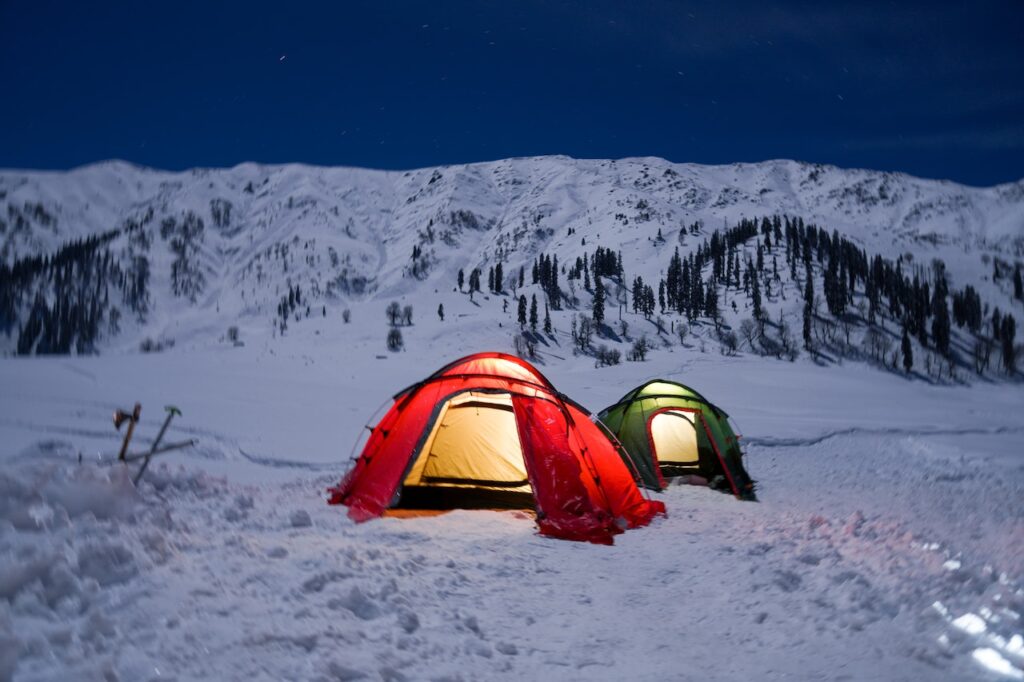
In this blog, we will explore the risks involved in sleeping on snow, the essential gear required, how to prepare the sleeping area, tips for staying comfortable, and advice for a successful sleep-on-snow experience. By the end, you’ll be equipped with the knowledge and skills needed to embark on your own unforgettable snow camping adventure.
1. Understand the Risks of Sleeping on Snow
Sleeping on snow can be a fun and unique experience, but it also comes with risks that need to be understood and mitigated to ensure safety. Some of the main risks include hypothermia, frostbite, and altitude sickness.
Hypothermia
Hypothermia is a serious condition that occurs when the body’s core temperature drops below normal levels. Symptoms can include shivering, confusion, slurred speech, and loss of coordination.
In order to prevent hypothermia, it’s essential to dress appropriately in layers, stay dry, and eat high-energy snacks. Treatment involves rewarming the body gradually and seeking medical attention.
Frostbite
Frostbite is a condition that occurs when skin and tissue freeze due to exposure to cold temperatures. Symptoms can include numbness, tingling, and skin discoloration.
Prevent frostbite by protecting extremities with warm clothing and avoiding prolonged exposure to cold. Treatment involves gradually rewarming the affected area and seeking medical attention.
Altitude Sickness
Altitude sickness is a condition that can occur when the body is exposed to high altitudes, causing a lack of oxygen to the brain and other organs. Symptoms can include headache, nausea, dizziness, and shortness of breath.
To prevent altitude sickness, it’s essential to acclimatize slowly, stay hydrated, and avoid exertion. Treatment involves descending to a lower altitude and seeking medical attention if symptoms persist.
By understanding the risks associated with sleeping on snow, you can take appropriate measures to mitigate them and ensure a safe and enjoyable experience.
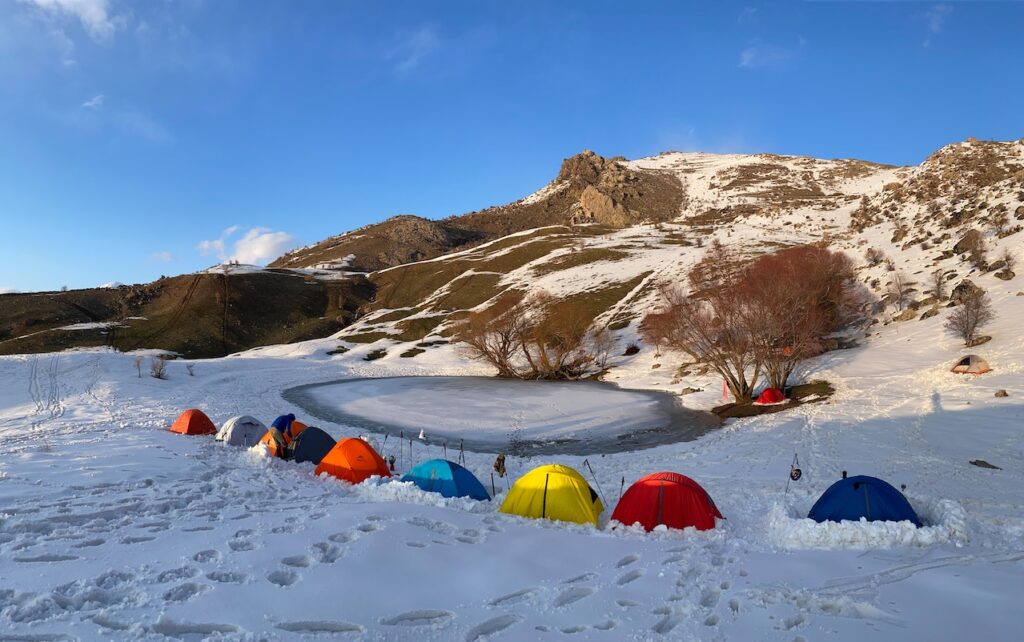
2. Choosing the Right Gear for Sleeping on Snow
Choosing the right gear is crucial for a comfortable and safe sleep on snow. Here are the key pieces of equipment to consider:
Sleeping Bag
A sleeping bag is your first line of defense against the cold. Look for a bag with a temperature rating appropriate for the conditions you’ll be sleeping in, insulation type (down or synthetic), and size and shape that fit your body.
Sleeping Pad
A sleeping pad provides insulation between you and the cold ground. Look for a pad with a high R-value (a measure of insulation) for maximum warmth, appropriate thickness for comfort, and durable material to withstand harsh conditions.
Tent
A tent provides shelter from wind, snow, and precipitation. Look for a tent that is appropriate for the season and conditions you’ll be camping in, with good wind resistance and waterproofness.
By investing in high-quality gear and taking the time to research and choose the right equipment for your needs, you can stay warm and comfortable throughout the night.
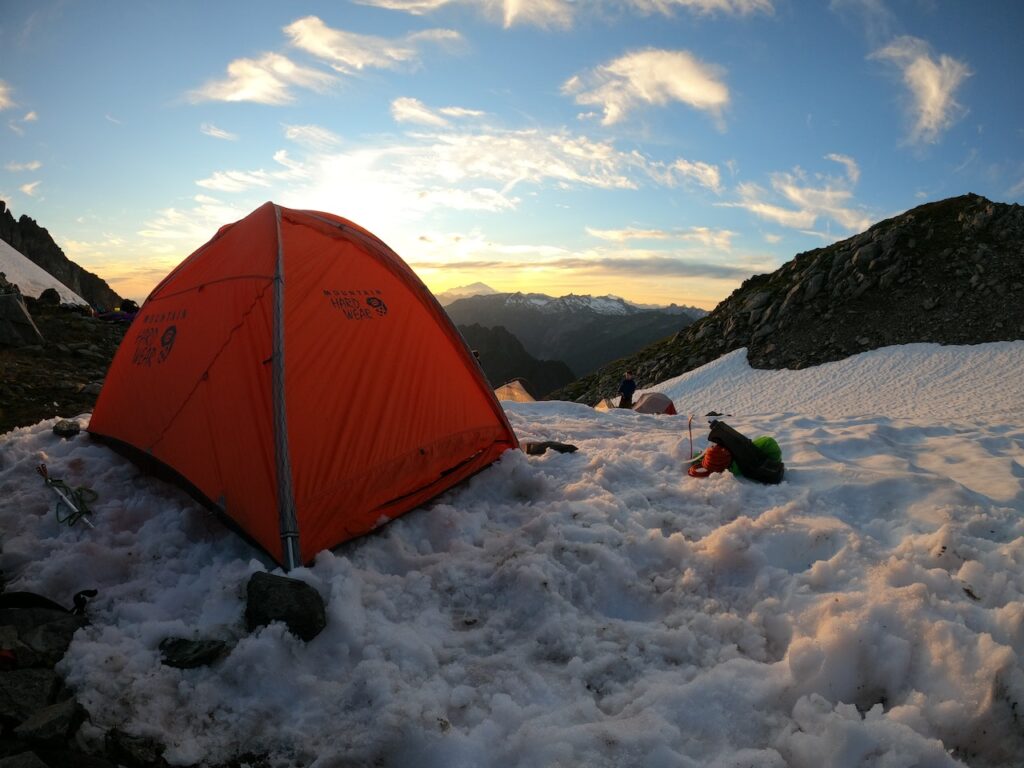
3. Preparing the Sleeping Area on Snow
Preparing the sleeping area is essential for a comfortable and safe sleep on snow. Here are the key steps to follow:
Site Selection
Choose a site that is sheltered from wind, avalanche danger, and other hazards. Look for a flat area with minimal slope and avoid areas with rocks, trees, or other obstacles that could affect your comfort or safety.
Snow Preparation
Pack down the snow where you’ll be sleeping to create a flat surface. Use a shovel or snow saw to dig out a platform for your tent and clear any debris or loose snow from the area.
Anchoring
Use snow stakes or deadman anchors to secure your tent to the ground. This is particularly important in windy conditions where your tent could be lifted off the ground.
By taking the time to prepare your sleeping area, you can ensure a comfortable and safe night’s sleep on snow.
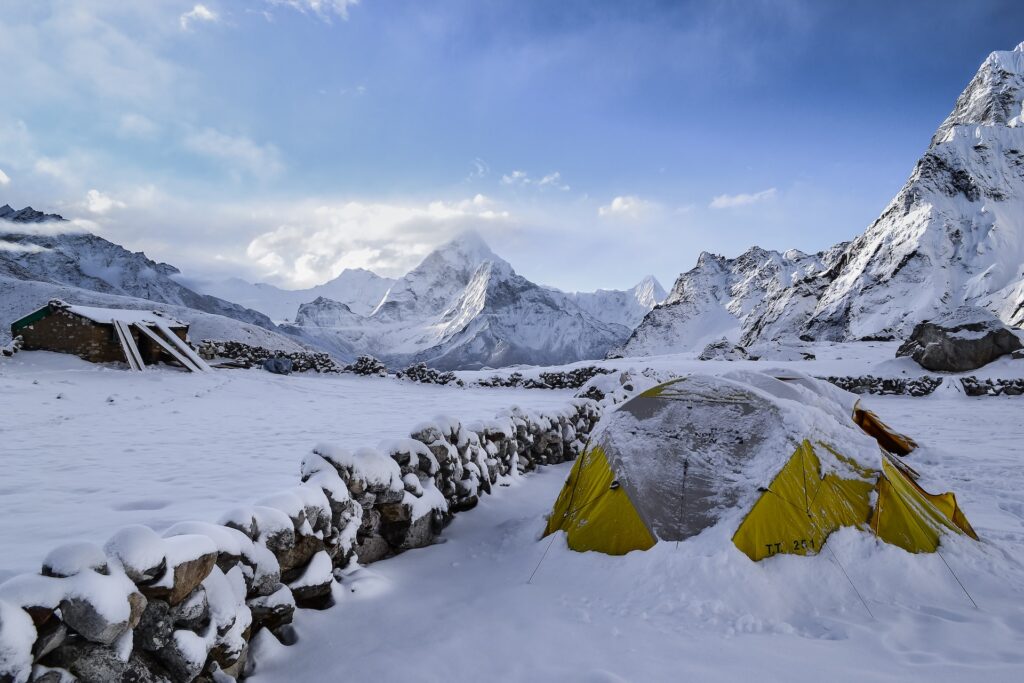
4. Staying Comfortable While Sleeping on Snow
Staying comfortable while sleeping on snow is key to a successful snow camping experience. Here are some tips to follow:
Layering
Dress in layers to stay warm and dry throughout the night. Start with a moisture-wicking base layer, add insulating layers for warmth, and finish with a waterproof and breathable outer layer.
Sleeping Bag Tips
Use a liner to keep your sleeping bag clean and add extra warmth. Place a hot water bottle in your bag before sleeping for added warmth. Don’t wear too many layers in your sleeping bag, as this can compress the insulation and reduce warmth.
Hydration and Nutrition
Stay hydrated and well-fed throughout the night to maintain body heat and energy. Keep a water bottle and high-energy snacks within reach.
Stay comfortable and warm throughout the night and wake up ready to tackle the day’s snow camping adventure.
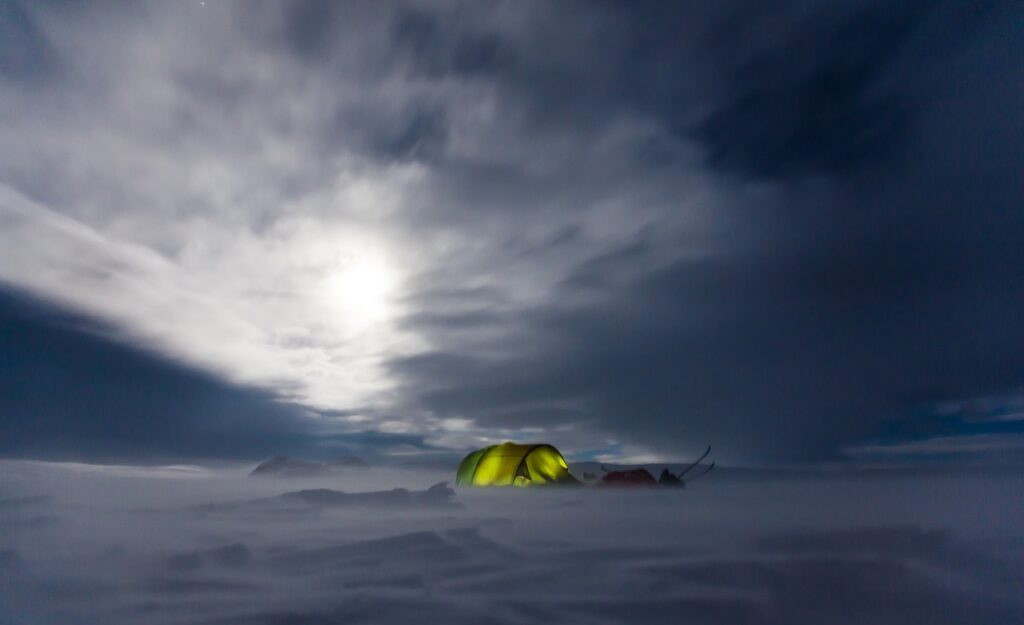
5. Tips for Successfully Sleeping on Snow
A successful experience involves careful planning and preparation. Here are some additional tips to follow:
Know the weather forecast
Check the weather forecast before heading out and plan accordingly. Be prepared for unexpected weather changes and pack extra gear as needed.
Practice setting up gear
Practice setting up your tent and other gear in advance to ensure you know how to do it quickly and efficiently in the field.
Bring extra batteries
Cold temperatures can drain batteries quickly. Bring extra batteries for your headlamp, phone, and other electronic devices.
Go with a group
Snow camping is always safer and more enjoyable with a group. Make sure everyone is aware of the risks and has the appropriate gear and knowledge.
Leave no trace Practice Leave No Trace principles and pack out all trash and waste.
By following these tips, you can ensure a successful and enjoyable sleep on snow experience while also minimizing your impact on the environment.
Conclusion
In conclusion, sleeping on snow can be a challenging yet rewarding experience for winter adventurers. However, it is important to understand the risks and take the necessary steps to prepare and stay comfortable throughout the night.
By choosing the right gear, preparing the sleeping area, staying comfortable, and following the tips for a successful snow camping experience, you can have a safe and enjoyable night’s sleep on the snow.
Remember to always practice Leave No Trace principles and respect the environment to ensure that future generations can also enjoy the beauty of winter wilderness. Happy snow camping!

